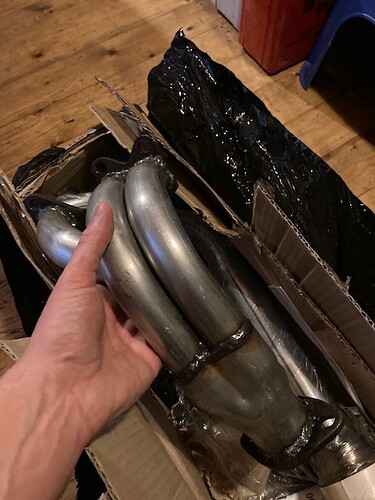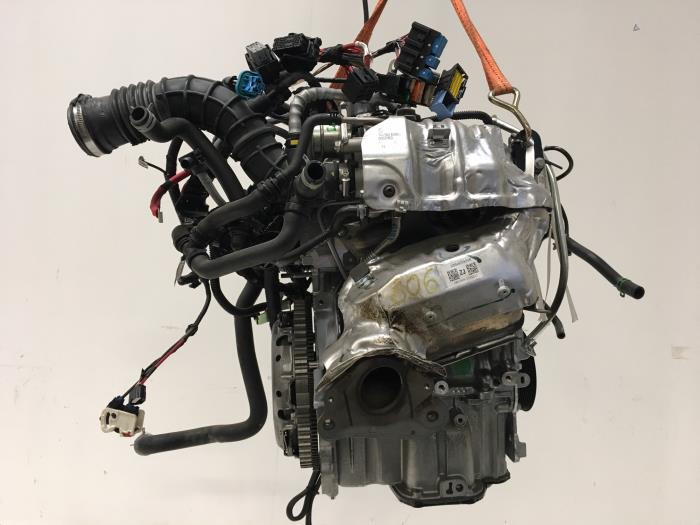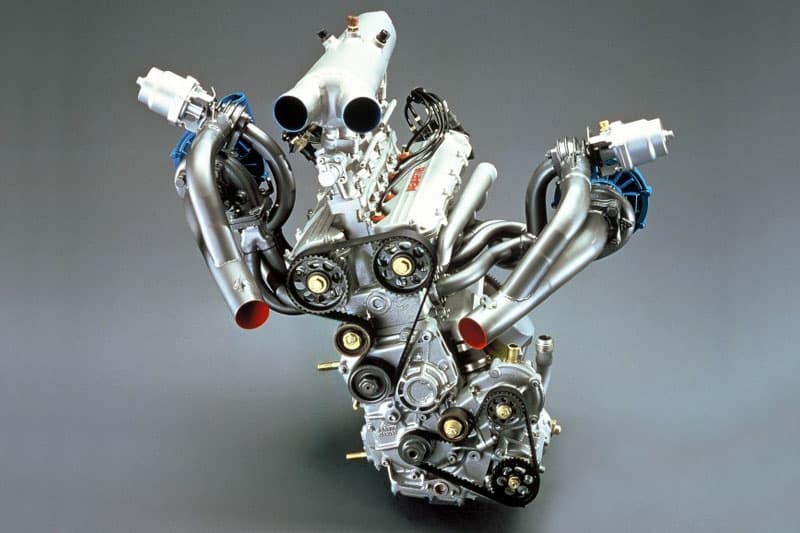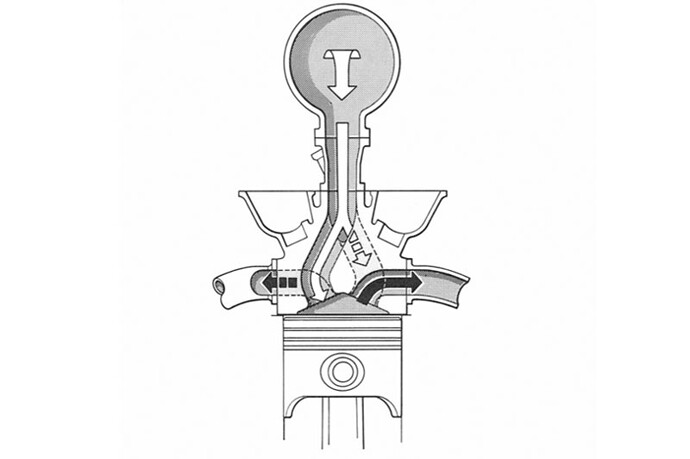You’ll need to check with someone here that has one. Also check if the splines match. My conversion needs a hybrid universal and some machining to shorten the rack such that the rack end pivots are the same distance apart as the control arm pivot distance between centers.
for a tacho, everyone uses the Speco 520-03 for 3 cyls
I have always used cheaper options for 3cyl tacho’s (@Mokeman ). I have never had an issue with any of the el-cheapo ones with the exception of a digital one I had years ago and that can’t be found anymore. The one I currently have in my swift (3cyl) is a 1-10 cyl selectable. It works and tells me the rpm without issue 
The odb2 / CAN saga…
So I purchased what I thought would be a plug and play tacho https://www.lufi.store/ and a CAN to odb2 plug/adapter from haltech. Assumed I would be able to simply piggy back the adapter off the wideband can port but thats not possible. Since you need to dedicate the CAN bus output to odb2 in order to use the adapter. That would stop the o2 from working.
I had a theory this morning that, since CAN signals are transmitted through ODB2 port, that I could simply get the CAN High and the CAN Low cables and attach them to the pins on the odb2 port of the gauge. A brilliant theory that should have worked, however, the gauge, while it does read those two CAN based pins, it also uses the K-Line to determine the car/CAN type in order to properly interpret the CAN signal. So in this case with the K-line disconnected but it still connected to a car with proper ODB2 it just reads “Searching Protocols”. Very annoying because if I could actually tell it which program to use it would work but the interface doesnt allow you to do that and it relies on detecting it through the K-line at start time.
So on the market for a smallish but decent quality tacho. Does anyone have any recommendations? appreciate the comments already but Im about to start searching online and would probably prefer something that is known to work instead of getting it wrong again
[quote=Mr_Gromsby]… Jasma or something else Malaysian are probably the only options. I bought a set once. Looking inside them they were not pretty. Nicely polished on the outside, but not even the slightest bit of deburring from the original cutting of the tubes…[/quote]
Someone at the other forum has unboxed the set of extractors pictured below of which I’ve long been looking for but could never find. Before I ask him where he got his from, I wanted to ask you if these resemble an example of those bodgy extractors of which you were referring to.
Due to strict emissions legislation, a catylist will need to be connected between these extractors, of which appear to be intended for connecting to the original pipe, and an intermediary pipe of which runs under the drivetrain to connect to a catylist of which must sit below a modified floorboard.
Here in Germany, converting over to an extractor of this type is legal, as long as a catylist is used in conjunction.
Replacing the 2-way original catylist with a more modern 3-way type will neither void his historical vehicle registry nor mine, within a few years.
Since both of us are using the type of fuel injection system of the L501s and 6, will this injection system be precise enough for avoiding overheating and eventual destruction of a 3-way catalist?
Here are the extractors of which he took delivery of:
From what I can see in the image they look different.
Do they look even worse? The welding beads on this one look somewhat sloppy. Perhaps, a Made in China?
The inside is what you really need to look at. The Jasma I had, no kidding at all, had the pipes inside mitred so poorly that a third of the port area was closed over. There beautifully polished on the outside, but junk on the inside.
The extractor pictured is only a replacement for the original combination extractor-catylist, without intending on catylist use whatsoever. Ideally, three equal-lengthed pipes would extend far beyond the point of where the original unit would be connected. The 4 in 1 extractor of which I had mounted onto my Honda Civic 1200 extended well under the oill pan, increasing low-end torque immensely, despite the high-lift camshaft I have had ground for this engine.
8 mm-thick steel plate, a pipe bender and a welder would suffice for fabricating one’s own extractor
A 3cyl header just needs to flow well. There is not pulse tuning. The 4-1 in your Civic works because of the pulse tuning. Any pulse in a 3cyl has the pulse arrive back when the valve is closed. I wouldn’t use a pipe bender unless it was a mandrel bender. The headers I made for mine used mandrel bends.
In other words, the extractor pictured doesen’t really have an advantage great enough to justify mounting a catylist behind it, since the original combination extractor/catylist should flow freely enough.
I’ve been noticing that pulse tuned manifolds don’t even exist for V-6 engines, since the cylinder banks are lined up in threes also. I once bought a set of extractors for a Ford Capri of which had the Cologne V-6 using one siamesed port on each bank. No noticable power increase was given. I ended up just having a louder car, because of them 
Yeah a 6cyl does not pulse tune. Actually the same for most V8s with 90deg between throws. Pulse tuned V8 is generally flat plane crank as throws are 180deg. I have seen pulse tuned v8s in pictures and they have to join the the banks on one side to the other with exhaust over or under the engine (usually exhaust in the valley).
If you move away from the std log type manifold there should be some benefit. The longer each runner is the more equalised the flow the flow should become, but things should not have to be perfectly equal - just long enough so one port won’t affect the other.
Are you allowed to choose your own cat? And do they check the exhaust emissions? You can get 50cel cats.
I suppose, I would need to find a cat ylist of which should resemble the flow rate of a typical 847 cc engine. The only one which comes close, as far as I know, is one from a Renault 900 cc issue. According to the following image, it’s not yet clear to determine if the heat shield is covering an exhaust manifold or the combination of one with catylist cast together:
Yes, V-8s typically used a crossover pipe between banks. Even the older non-tuned exhaust systems used these.
What do you mean by “50cel Cat”? I’ve never heard of these mentioned 
The cross over typically seen is not the same as a conventional crank with a crossover like this repco brabham (note this has non-cross flow heads. I believe this was done so the the tubes could be mixed and matched from one side to the other.
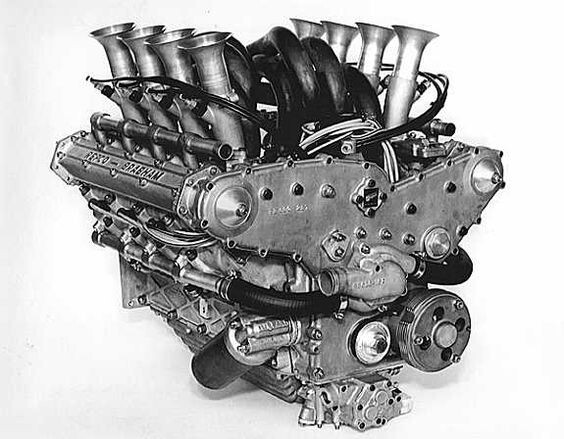
Those cross over tubes mid way along the exhaust are (I think) more about flow than pulse. The sonic flow or pulses end up with twice the diameter to flow through. I’ve not played a lot with V8s, esp not production ones and only know the little I’ve learnt from meeting people like Roger Higgins (v8 supercar builder at one point and now develops Coyotee Ford V8 mostly for race) or Dean Tighe (and the bit he’s explained about his 4000cc Judd V8).
From my experience cats are normally 400 or 200. Performance cats are 100 or 50. The number means how many cells there are in one square inch. The more cells the more drag, and the longer the cells the more drag too.
It’s critical that the engine provides sufficient flow, in order for the catylist to function properly, since it can only function through high temperature heat transfer (extractor-taping could only help). This is why dimensioning cats for small engines like the EDs is critical. The end result will be ultimately determined, at emissions inspection.
Answering your previous yet unanswered question, the inspection authorities will accept such modifications, if done on a professional level.
That V-8 pictured might have been deliberately constructed in that manner, in order to fit into the vehicle it was to propell, given possible design limitations of the vehicle itself. If an 8 -1 extractor has an advantage over 2 4-1 extractors is questionable. In any event, that engine would have suffered a massive thermal imbalance.
F.I.A.T. once developed an engine constructed to an opposite arrangement, in order to minimize thermal inefficiency. Of course, it couldn’t have been done, without adding double the amount of valves. As soon as I find an illustration, I’ll edit. The cylinder head consisted of having both exhaust- and intake ports on each side
Yes that V8 was very much done like that to win the F1 Championship in the 1960s.
Fiat also did a four (for the Gp S Lancia) with an internal cross over of sorts where combustion exited opposite sides of the head. Instead of inlet or exhaust valves being parallel they were in a crossed fashion.
Dubbed the “Triflux”
The low cell cats won’t pass an exhaust emissions, rather they are to pass regulations that just inspect that they are installed. Such is the case for the State I live in. Main Roads (or their delegate) may inspect that a cat is in place and that is often sufficient. Some just knock the insides out, but I wouldn’t do that (or would I? For off road purposes only if I did).
@Butch_Butcher do you have a link for where you purchased these extractors?
Sad to say, they aren’t mine  A fellow member at a German forum purchased those: Mein neuer alter L201 - Seite 30 - Daihatsu-Forum.de I was hinting also on where he purchased those. But it seems, he’s expecting me to beg him for revealing his source. Maybe, I should outright ask anyway.
A fellow member at a German forum purchased those: Mein neuer alter L201 - Seite 30 - Daihatsu-Forum.de I was hinting also on where he purchased those. But it seems, he’s expecting me to beg him for revealing his source. Maybe, I should outright ask anyway.
If those were my extractors, I wouldn’t hesitate in posting the vendor’s link, without anybody needing to ask. I guess, it’s even the minor things in life of which make some persons feel important
@mjwalf: I just popped the question: Mein neuer alter L201 - Seite 33 - Daihatsu-Forum.de Let’s see what we get for an answer
All he wrote was that it was sent from Malaysia
